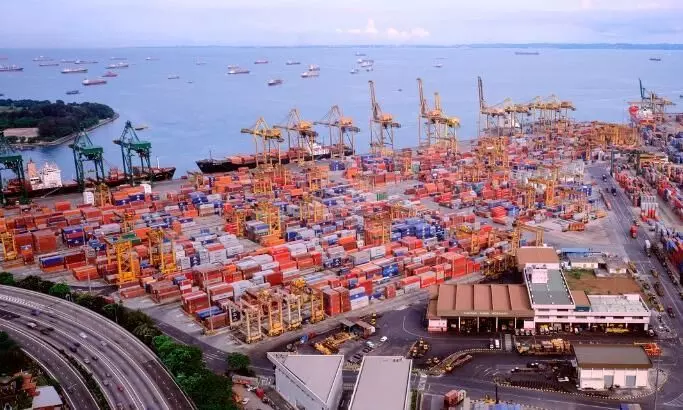China’s new COVID outbreaks – supply chain issues to persist in 2023
As the world continues to grapple with the pandemic, the increasing new COVID outbreaks in China could lead to further global supply chain disruptions, the reason why experts are talking more about supply chain issues 2023 and how to deal with these challenges.
China is a crucial player in the global economy and a key supplier of a wide range of goods, including electronics, clothing, and machinery. Any new outbreaks of COVID in the country could lead to disruptions in the production and transportation of these goods, leading to delays and shortages.
The 2021 Global Imports Report indicates that a significant proportion of goods imported to the United States, 42%, originate from China. As a result, when a region in China experiences a sudden lockdown, it can lead to product shortages and delays in shipping for both businesses and consumers.
What could the new outbreaks cause?
In the event of new outbreaks in China, companies that rely on Chinese suppliers or have manufacturing operations in the country may face delays in receiving raw materials or finished goods. This could lead to shortages of certain products, which could impact the availability of goods for consumers and result in higher prices.
Three main challenges supply chain leaders will face in 2023
In times of constant disruption, being well-prepared for key supply chain trends can provide a significant competitive advantage for an organization. So, here’s a list of challenges that global supply chain leaders might have to be prepared for and find solutions proactively!
1. Pandemic and inflation – Not the ideal combination
The changing consumer behavior caused by inflation and price hikes is
a significant factor that can impact supply chains. As consumers adjust to the new normal, they may be more mindful of their spending and may be more likely to choose cheaper options or cut back on certain purchases. This can lead to changes in demand for certain products and may result in shifts in the supply chain. For example, companies may need to adjust their production and sourcing strategies in response to changes in consumer demand. Organizations need to be aware of these shifts in consumer behavior and be prepared to adapt their supply chain strategies backed by reliable data.
2. Smaller companies are at higher risk
Supply chain disruptions have affected companies of all sizes, but
smaller businesses may be more vulnerable to the negative impacts. While larger companies may have more resources and proactive supply chain processes in place, smaller businesses may struggle to adapt to disruptions and may not have access to the necessary working capital to weather the storm. As a result, smaller companies may be at a disadvantage compared to larger ones.
In addition, larger companies often have greater negotiating power and may be able to absorb higher costs or pass them along to consumers. They may also have easier access to credit, which can be a significant advantage in times of economic uncertainty. Overall, it is vital for all companies, regardless of size, to be proactive in managing their supply chains and be prepared for potential disruptions.
3. Port Congestion – but this time, due to labor shortages

Labour shortages at ports due to the pandemic outbreaks and lack of sufficient truck drivers are expected to worsen port congestion. The problem will persist into 2023, making it difficult to obtain certain products. While the COVID-19 pandemic previously caused cargo ships to be unable to dock due to restrictions, the current cause of port congestion is a shortage of trucks to transport the cargo to its destination. Overall, these ongoing challenges in the transportation industry will likely continue to impact the global supply chain.
Quick steps to handle the supply chain issues 2023
To reduce the potential adverse effects of supply chain disruptions, companies may consider diversifying their sources of supply, increasing inventory, or adopting agile supply chain management practices that provide greater flexibility and adaptability.
Following are some of the areas that should be a point of focus:
A shift from a Just-In-Time to a Just-In-Case approach
To prepare for potential supply chain disruptions, companies should check their inventory of critical raw materials and plan ahead. Building up a supply of essential materials that can last for several months can help a company weather a disruption. In the event of a disruption, it may also be necessary to maintain a reserve of finished products, components, or raw materials to keep the business running.
To reduce the risk of supply chain disruption, companies can consider shifting from a Just-In-Time to a Just-In-Case approach, holding extra inventory for critical items, operating at low capacity, and engaging with multiple suppliers. This can help to create redundancy in the supply chain and increase its resilience.
Establishing preliminary relations with alternate suppliers
While it may be challenging to transition to nearshore suppliers immediately, companies should identify alternative sources of supply in case their usual suppliers cannot deliver. To mitigate the potential impacts of disruptions, companies can consider finding alternative suppliers in different regions and establishing a preliminary relationship with them. This will allow them to turn to these alternative sources as needed in the event of a disruption.
The most crucial: Prioritizing technology investments
In 2023, it is expected that there will be an increased focus on investing in supply chain visibility. Many supply chain managers are currently experiencing challenges due to a lack of insight into their networks. As a result, it is expected that there will be a greater emphasis on improving supply chain visibility in the coming year.
A recent study among global supply chain leaders showed that 6 in 10 plan to invest in digital technology to bolster their supply chain processes, data synthesis and analysis capabilities. Approximately two-thirds of global business leaders believe that improving visibility into their supply chains is crucial for maintaining operational stability in the future.
Leverage technologies such as cloud-based AI tech solutions for greater supply chain transparency and visibility, while eliminating discrepancies and duplications, and automating the operations workflow. By implementing real-time data analytics, companies can improve the accuracy of their demand, which can help organizations better anticipate and respond to changes in demand.
In summary: Supply chain issues 2023
Supply chain disruptions are expected to continue for the foreseeable future as the world continues to face challenges such as pandemics, labor shortages, political instability, natural disasters, and other shocks.
Improved end-to-end visibility of the supply chain, combined with sophisticated planning capabilities and agility, can help mitigate risks and vulnerabilities and allow organizations to seize opportunities that might otherwise be difficult to capitalize on. By proactively addressing these trends, companies can position themselves for a risk-free supply chain operation.
If you are looking to mitigate supply chain disruptions by obtaining end-to-end visibility and transparency into your supply chains, feel free to reach out to us.
